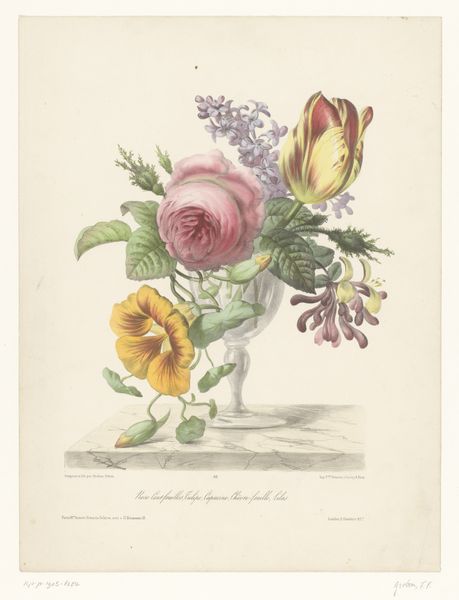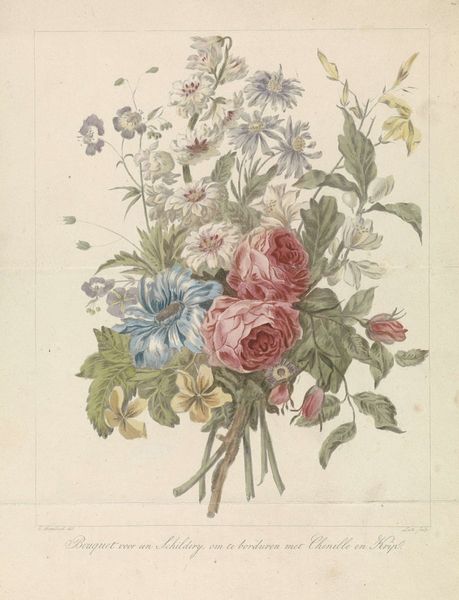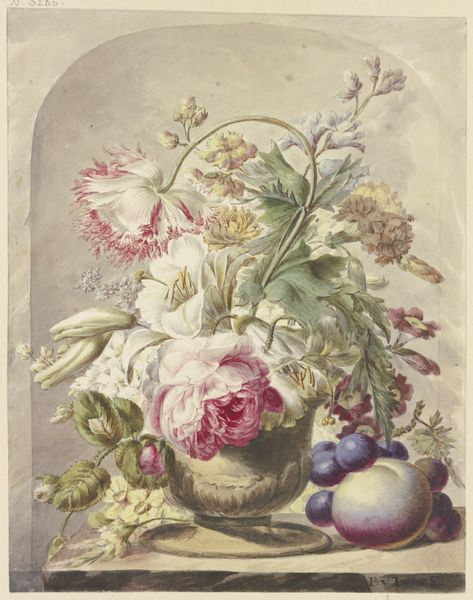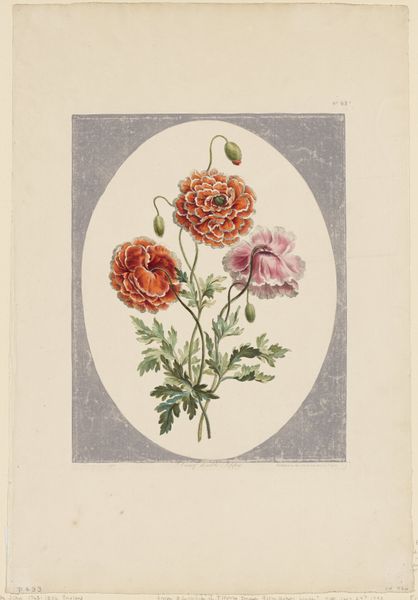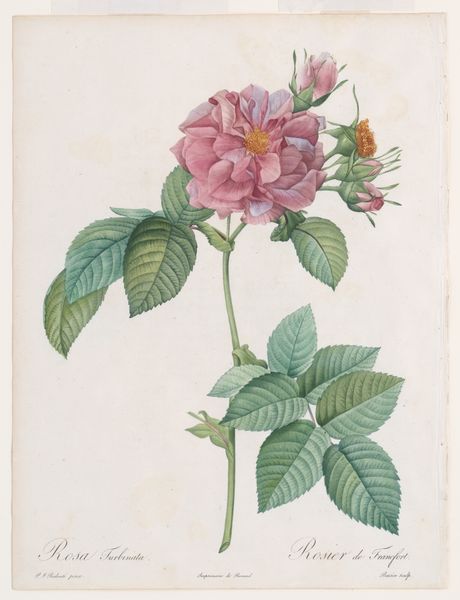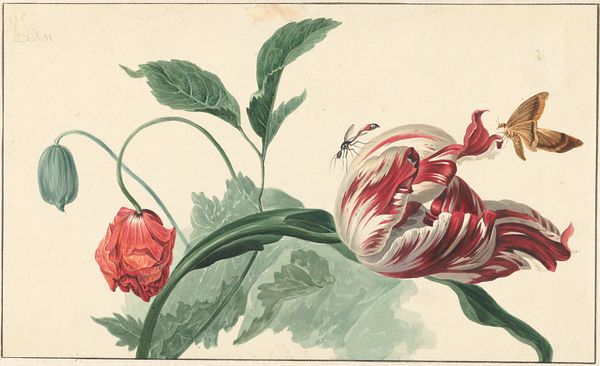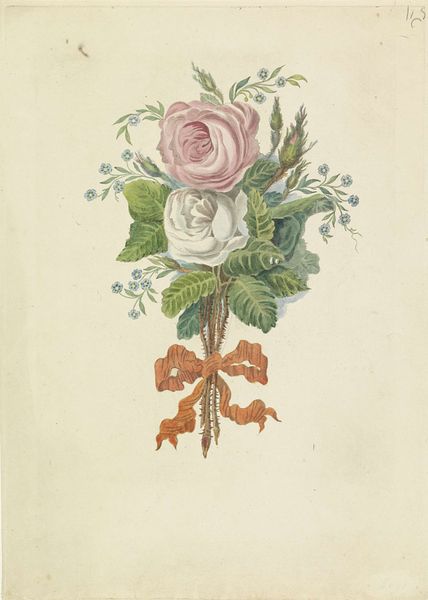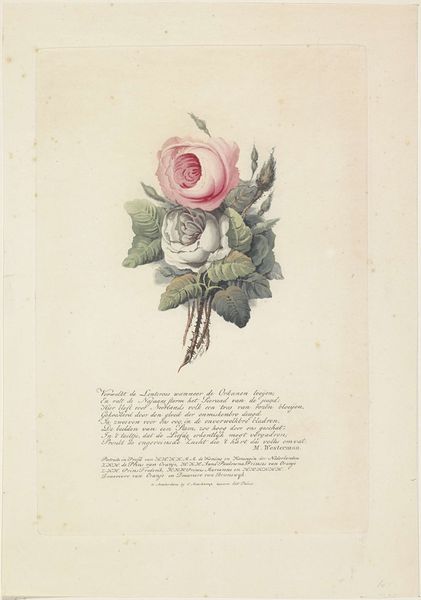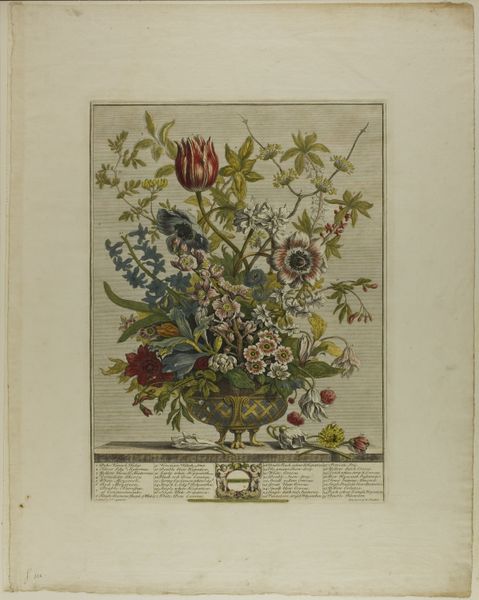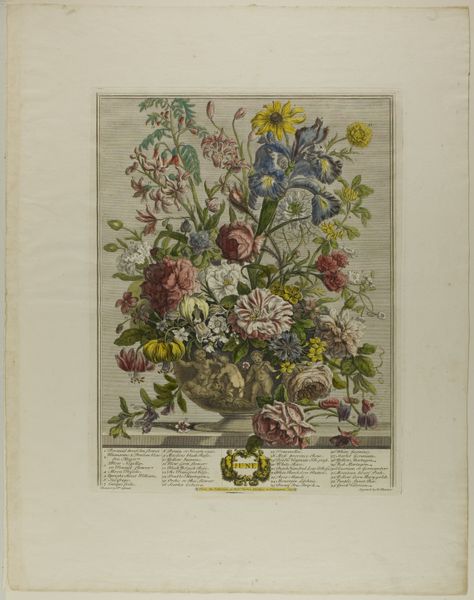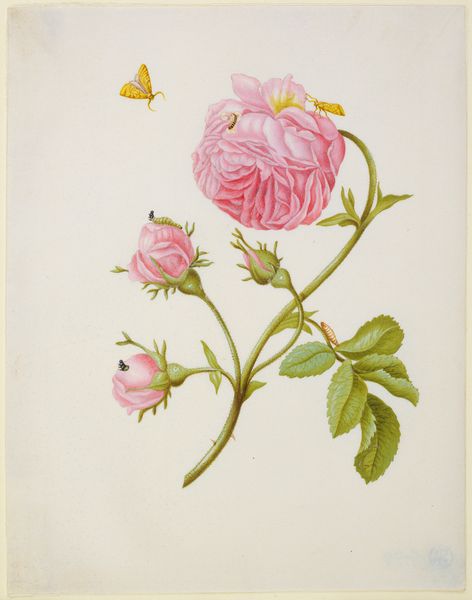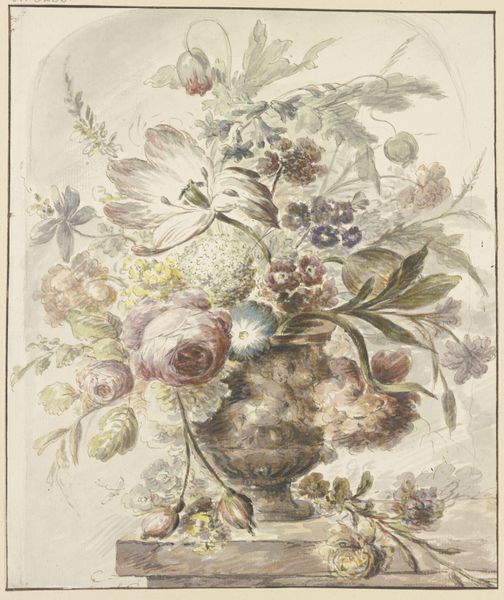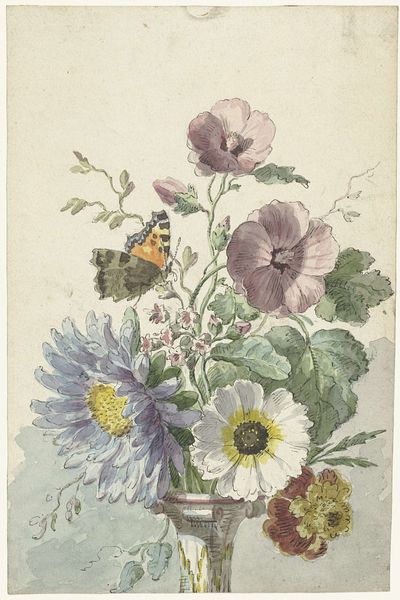
painting, watercolor
#
painting
#
landscape
#
watercolor
#
romanticism
#
watercolor
#
realism
Dimensions: height 218 mm, width 146 mm
Copyright: Rijks Museum: Open Domain
Editor: Here we have Willem van Leen's "Klaprozen," a watercolor from 1804. It's really delicate, the petals almost seem to shimmer. How do you interpret this work? Curator: This piece is brimming with symbolism. Consider the poppy itself; throughout history, it's carried varied meanings. From ancient Greece, associated with sleep and dreams due to its opiate properties, to its later use as a symbol of remembrance for fallen soldiers, the poppy straddles life and death, memory and oblivion. What feeling do the poppy's multiple connotations bring to mind? Editor: A sense of duality, definitely. Almost like beauty tinged with melancholy? Curator: Precisely. And consider the context. The Romantic era embraced emotion and the power of nature. Van Leen wasn't simply depicting a flower; he was tapping into centuries of cultural memory associated with the poppy. The ephemeral nature of watercolor adds to this sense of fleeting beauty and the transience of life, doesn't it? Editor: Yes, it does. The wash technique emphasizes the fragility. I hadn't considered how the medium itself contributed to the overall symbolism. Curator: And look closely – what emotions do these shades evoke? Does it bring to mind earlier flower paintings in the Dutch Golden Age? Editor: It does, now that you mention it, though this one is lighter, more transparent, maybe hinting at a shift in perspective. This flower speaks volumes about more than just botany. I appreciate knowing that historical perspective changes the reading so much! Curator: Indeed. Artworks aren't created in a vacuum. Examining these visual cues embedded with symbolic weight opens a richer understanding of the art piece and our connection to it over time.
Comments
No comments
Be the first to comment and join the conversation on the ultimate creative platform.
